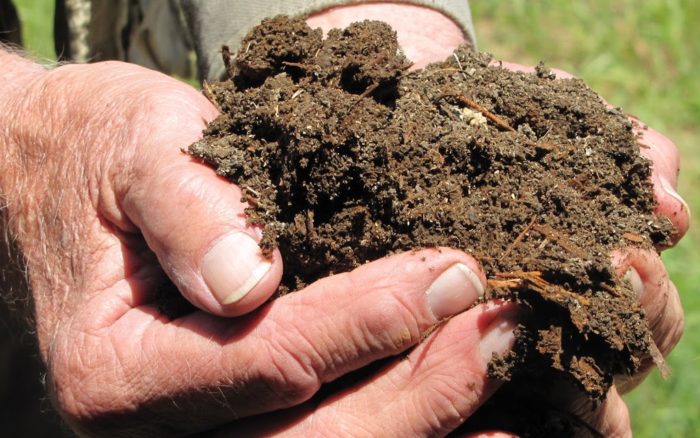The Smell of the Living Earth
Once my sister and I dug a “raccoon trap” in the fall stubble of my father’s corn field, a 3’ by 4’ hole about 3’ deep. In the bottom we placed marshmallows and then disguised the hole with dried corn stalks. The only thing we ever “caught” was the front tire of the tractor as my uncle was spring plowing, and then we really caught it! But one thing I remember and now find remarkable: We never hit subsoil, the topsoil was that deep.
We lived in a converted schoolhouse, the one my father and grandmother had both attended, in the middle of what had once been the great prairie of the central part of United States. Prairie grasses are deep and build top soil. We were the beneficiaries of this legacy of thousands of years of prairie, which, by the time we were living there, was 98% gone.
When the fields were plowed in the spring, the air was redolent with the rich smell of living earth. I took that smell for granted, as if it were a baseline experience upon which to judge all others. We were told we lived in an area with some of the best soil on earth, that only in one place in Russia, and maybe Iowa, was the earth any better.
It grew good crops, too. Our corn was thick and tall; our soybeans, deep green and loaded with pods. When we drove through southern Illinois, we felt sorry for the farmers with their thinner, weaker soils and less vigorous crops.
I heard once that the top soil of the Midwest is so rich and deep that it can handle years of abuse before its growing capacity collapses. Its vitality lends the earth to exploitation. The living quality of the earth: the micro organisms that colonize the soil, the decay that makes organic matter (humus), sequestering carbon, is not attended to, only that which grows from it. Production is the goal, not replenishing the living earth.
My husband and I live in an area in which we cannot take the top soil for granted. This means we have to be more conscious about our farming. Farming Soul: A Tale of Initiation tells of the farming crisis we were in, and how this crisis brought us into a healing discipline of Biodynamic farming in which the focus is the earth. In these blogs I will discuss some of the ways we work with the earth on our ranch and what it means.
Although the culture is beginning to address the impact of the use of chemicals and genetically modified seed on the environment, and even our own bodies, one issue greatly overlooked is the impact on the human psyche. The psychologist Carl Jung was very aware of the impact. He said:
…if one touches the earth one cannot avoid the spirit. And if one touches it in the friendly way of Dionysus, the spirit of nature will be helpful; if in an unfriendly way, the spirit of nature will oppose one. …We never pay attention, so we probably offend the spirits of things all the time, and because we have not been polite they will be against us, and this leads us more and more into a kind of dissociation from our own nature (p. 459 Vision Seminars).
According to Jung, the neurotic is that person dissociated from his or her own nature. Healing involves re-membering ourselves, remembering we are physical beings that are a part of a whole of nature, but only one part.
But returning to smell: One of my favorite times during our June Open House at our ranch is a tour in which we describe how we apply biodynamic principles. As we walk through the thigh-deep lavender in full bloom, I describe how we compost. We begin with goat barn bedding, cow manure, lavender distilling debris, and grape pumice, layering manure alternately with bedding straw, then inserting compost preps, and covering the pile with a foot of straw to work over the next year. As we stand around the compost, I reach into the pile and pull out a handful of sweet-scented compost, moist, crumbly, and smelling of my father’s fields. People pull away at first, shocked, but when they smell, and most will after the initial reluctance, their eyes wander, as if they are remembering… re-membering…
